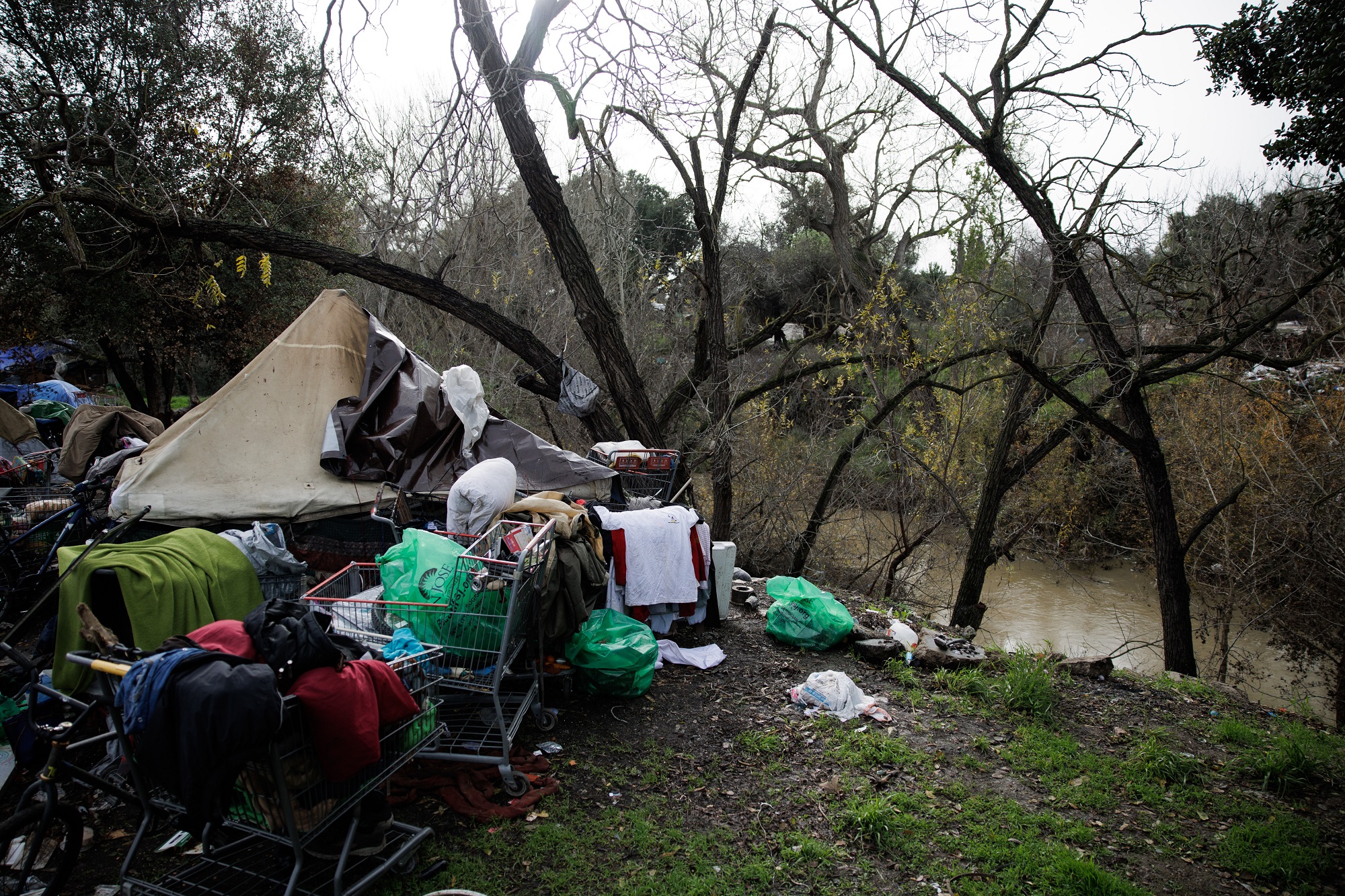The measure, which passed the council on a 9-2 vote, would add an expectation of accepting shelter to the city’s Code of Conduct for Encampments.
“I don’t think it’s humane or compassionate to allow people to live or die on our streets when they are unable or unwilling to accept the help the city is able to offer,” Mahan said.
San José’s police chief said violations of the code, which include camping near a shelter site, would guide police to prioritize specific encampments for outreach, and eventually arrests, such as for trespassing or illegal dumping.
The measure will also create new police and housing units for outreach and enforcement. Mahan said his hope was to use arrests to compel unsheltered residents into court-ordered treatment.
Responsibility to Shelter faced widespread skepticism from Santa Clara County officials — including members of the board of supervisors, the district attorney and the county sheriff — who argued the measure will push unhoused people into the criminal justice system without adding more housing for them while they receive treatment.
Councilmember Peter Ortiz, who joined Councilmember Pamela Campos in opposition to the shelter enforcement plan, said the measure unfairly assumes that everyone who refuses shelter is suffering from addiction or mental health challenges.
“Someone who simply declines shelter could be susceptible to being arrested, when many reasons for denying [shelter] are relevant and should be taken into consideration,” Ortiz said.
The enforcement plan is likely to be carried out primarily in areas around interim housing sites, where the city has established no-encampment zones. Mahan argued that compelling unhoused people to accept shelter will help improve conditions on the streets around new shelters —which he views as key for maintaining political support for the interim housing program.
To pay for that program’s ongoing costs, the council voted to permanently earmark the lion’s share of tax revenue raised through Measure E, a tax on property sales, for temporary housing and shelter. The new Measure E spending plan sets aside 90% for shelter costs ($47 million in 2025-26) and 10% ($5.2 million) for homeless prevention programs such as rental assistance.
Campos pushed to increase the prevention funding to 15%, but that idea was rejected by a majority of the council.
“When you are put in this predicament of having to do a lot with less prevention just makes sense,” she said.

By covering interim housing costs with the Measure E fund, rather than the general fund, the council erased a $35.6 million budget shortfall — and avoided the need for the large staffing cuts needed to balance municipal budgets in San Francisco and Oakland.
“It preserves our staffing which is really really important,” said Councilmember Pam Foley. “Because they’re the ones who provide the services that we need to do the work in the city that our residents depend upon.”
With the added fiscal breathing room, the council approved a memo from Ortiz to spend at least $1 million on immigration services, including on-call lawyers and programs to educate undocumented residents about their rights.


